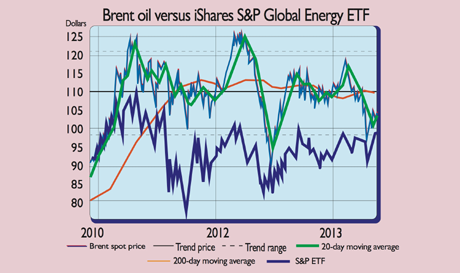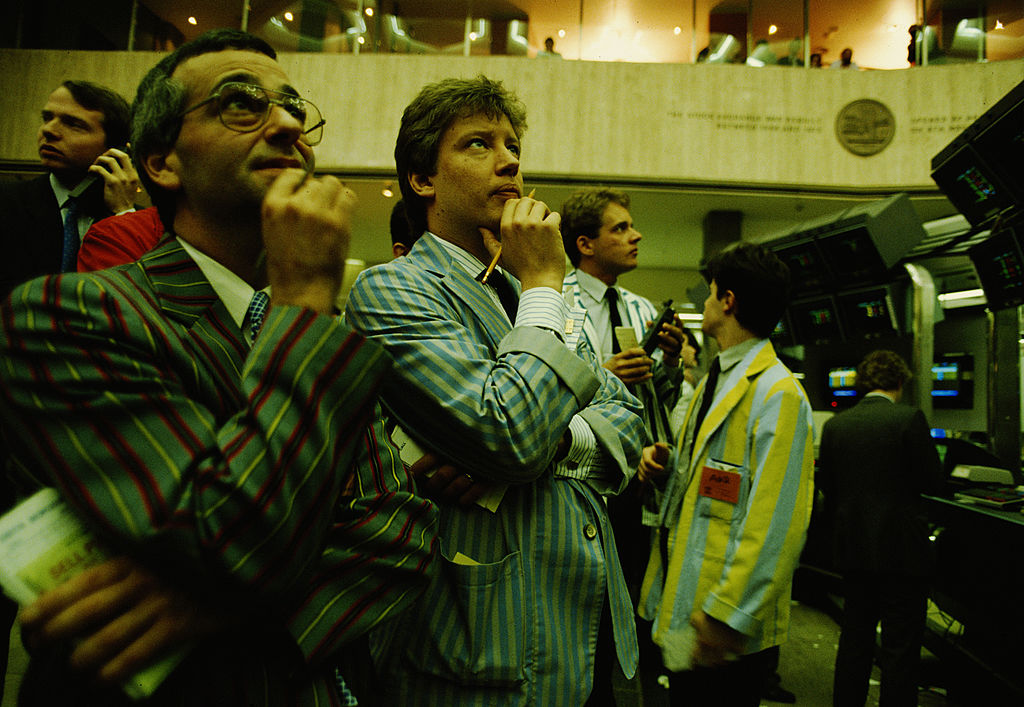Where is the oil price heading?
The oil price will probably stay stuck in its range – but even if it plummets, oil firms should still profit handsomely, says David C Stevenson. Here, he tips the best funds to profit.

What investors term commodities' spans a huge range of sub sectors, from agriculturals (softs') such as corn all the way through to metals including copper or iron. In the middle of this spectrum are the energy commodities, in particular oil and gas, followed by coal and, to a lesser extent, uranium the subject of my last article.
Yet viewing commodities too readily as a broad market is misleading. Softs, for instance, are strongly influenced by weather and new acreage trends, whereas industrial metals move up and down broadly in line with the business cycle and global GDP growth.
The energy markets echo this complexity. The price of oil, for instance, is dependent on the health of the global economy, but it is far less cyclical than, say, the price of copper.
MoneyWeek
Subscribe to MoneyWeek today and get your first six magazine issues absolutely FREE

Sign up to Money Morning
Don't miss the latest investment and personal finances news, market analysis, plus money-saving tips with our free twice-daily newsletter
Don't miss the latest investment and personal finances news, market analysis, plus money-saving tips with our free twice-daily newsletter
Equally, oil and gas markets are influenced by local supply and demand North American West Texas (WTI) crude, for example, is heavily influenced by booming shale oil supplies and infrastructure blockages around the American Midwest.
On top of that you have a range of structural factors, including government action to curb carbon emissions and the ever-present threat of climate change. Energy-market insiders also worry about peak oil (the idea that the rate of depletion of existing reserves is exceeding the rate of new discoveries).
Others point to the increasing marginal cost of new oil reserves, especially offshore, suggesting that at the margin oil prices have to increase to cover exploration costs.
Set against these two forces, which push up oil prices, is the astonishing North American shale oil and gas revolution of the last few years, which has resulted in a huge fall in the price of North American natural gas prices. The simple message for investors from all this is that energy markets are very complex.
The major price trends
As those worries begin to fade away and global growth strengthens, peak oil fears will resurface and oil prices will move above $100.
The rather complex-looking chart belowtells this story and more besides. The various squiggly lines look at measures for Brent oil since the end of 2010. The key line is the thin blue and red line, which indicates the spot price of Brent. The thick straight horizontal line is the trend price over this period about $110 a barrel. The dotted horizontal lines either side show the trend range, which is between $97 and $123.
The orange line shows the 200-day moving average, which is currently well above the spot price. The thick green line shows the 20-day moving average, which is now just below the spot price, but only just. Lastly, the thick blue line shows the price of a well known US exchange-traded fund from iShares that follows the share price of leading global energy companies.

A number of important conclusions emerge from this. Firstly, energy shares (such as Exxon and BP) have really lagged spot oil prices. This suggests a structural bear market for oil stocks. Secondly, spot oil prices for Brent seem to be on a knife edge, well below their 200-day moving average. This is strongly bearish.
However, a push above recent 20-day moving averages suggests that short-term downward price pressure may have abated for now. Thirdly, oil prices seem stuck in a $97 to $123 range, although on a five-year basis that range increases to $80-$120.
The fact that oil will probably continue to trade in this sort of range is excellent news long term for the energy sector, if not for the key Middle Eastern states that rely on prices staying above $100 a barrel to fund rapidly growing welfare states.
If oil did fall to $80, I think Opec, the oil cartel, would do everything in its power to put a floor under prices. But even at $80 a barrel, many of the major oil firms are making substantial profits that should underpin demand for oil equities.
On top of that, climate change and the increase in demand from developing markets should act as a positive driver for energy companies, powering a continued multi-decade energy-infrastructure and capital-expenditure boom that should also benefit the growing oil-equipment and services sector.
How should you invest?
The big integrated oil and gas majors are more attractive, but I think you run big company-specific risks here, as BP's various entanglements in the Gulf of Mexico and Russia show. Funds, therefore, are a more sensible alternative.
The simplest are oil-market trackers, with the widest offering, focusing on Brent and WTI prices, available from commodities specialist ETF Securities. It offers everything from basic price trackers (that follow the futures market) to leveraged/geared funds that magnify spot-price moves and even profit from falling oil prices.
They also offer funds that follow natural gas and heating oil prices, plus gasoline trackers. Boost ETP is also worth a look, as it offers leveraged trackers that give three times the daily return long or short for oil and gas prices.
My own preference is to be exposed to energy equities, and there's plenty of choice here too. ETF Securities and iShares (LSE: SPOG) both offer exposure to energy stocks via tracker funds, while Deutsche db X-trackers also offers an excellent European-wide energy-market tracker that follows the major energy companies in the Stoxx 600 index (ticker XSER) including BP, Shell, and Total.
Active funds also offer some excellent choices Artemis in particular has a great reputation in the energy markets. Investors can invest directly in its Global Energy fund run by John Dodd (0800-092 2051). More adventurous investors might look at the Artemis Alpha investment trust (LSE: ATS), which has a 40%-plus exposure to the commodity sector.
I'm also quite a fan of the Guinness Global Energy fund (020-7222 2037) run by Ian Mortimer, which invests in both integrated oil and gas majors as well as equipment and service providers British companies such as Woods Group and Petrofac excel here.
For small-cap exposure try the Junior Oils Trust (0808-145 2500) and New City Energy (020-7201 6900) funds the latter is run by the same manager as the highly regarded City Natural Resources High Yield Trust (LSE: CYN), which holds a much wider range of commodity stocks.
Exchange-traded fund (ETF) provider iShares has a much bigger range of ETF trackers in America. Rival fund managers include Market Vectors, offering trackers that focus on the US shale oil and gas revolution (NYSE: FRAK).
The US market also has a wide range of income-orientated funds. These include royalty funds (where a percentage of the cash flows from a field are paid out as dividends) and master limited partnerships, which invest in energy infrastructure, including pipelines. For more on this very specialised market, please watch out for my next article.
Get the latest financial news, insights and expert analysis from our award-winning MoneyWeek team, to help you understand what really matters when it comes to your finances.

David Stevenson has been writing the Financial Times Adventurous Investor column for nearly 15 years and is also a regular columnist for Citywire.
He writes his own widely read Adventurous Investor SubStack newsletter at davidstevenson.substack.com
David has also had a successful career as a media entrepreneur setting up the big European fintech news and event outfit www.altfi.com as well as www.etfstream.com in the asset management space.
Before that, he was a founding partner in the Rocket Science Group, a successful corporate comms business.
David has also written a number of books on investing, funds, ETFs, and stock picking and is currently a non-executive director on a number of stockmarket-listed funds including Gresham House Energy Storage and the Aurora Investment Trust.
In what remains of his spare time he is a presiding justice on the Southampton magistrates bench.
-
 The new frontiers of cybersecurity and how to invest
The new frontiers of cybersecurity and how to investMatthew Partridge reviews the key trends in the cybersecurity sector and how to profit
-
 Investment trust troubles: back to the 1970s for investors?
Investment trust troubles: back to the 1970s for investors?Opinion Those fearing for the future of investment trusts should remember what happened 50 years ago, says Max King